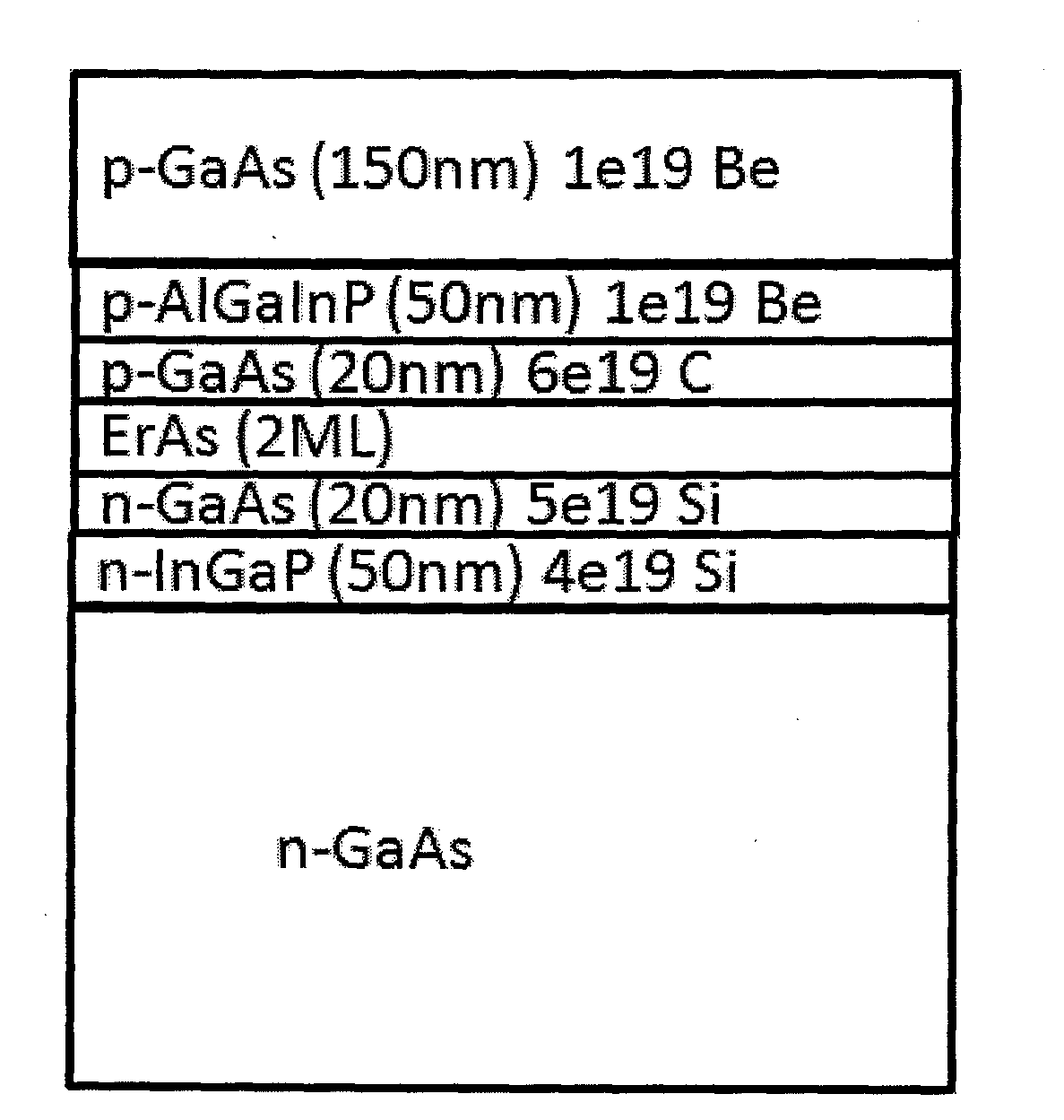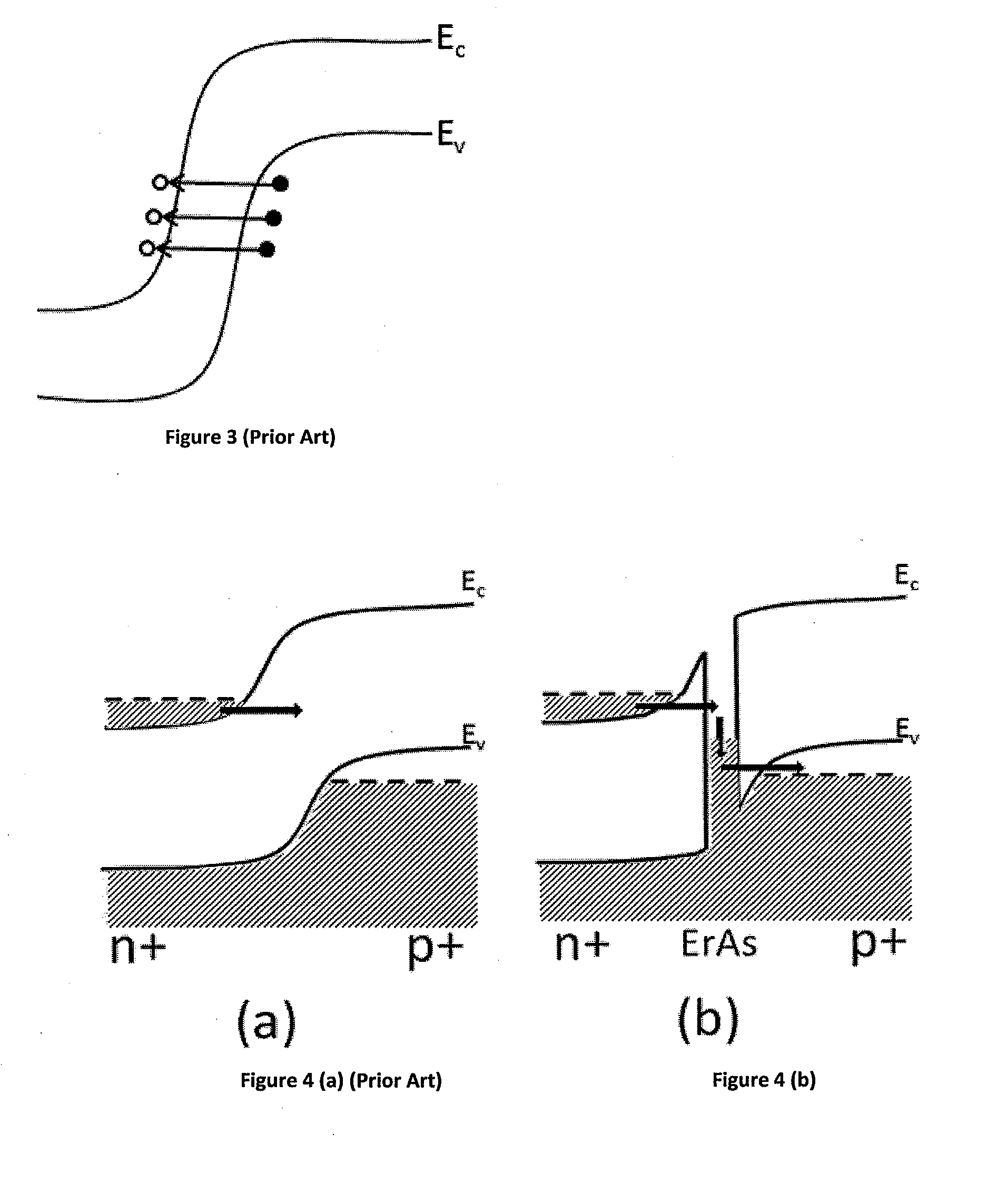Functional Integration Of Dilute Nitrides Into High Efficiency III-V Solar Cells
- Summary
- Abstract
- Description
- Claims
- Application Information
AI Technical Summary
Benefits of technology
Problems solved by technology
Method used
Image
Examples
Embodiment Construction
[0042]Referring to FIG. 4(b), the operation of a tunnel junction with erbium arsenide is illustrated. The operation comprises, first, the tunneling of electronic carriers from the higher potential n+ state of a III-V material into a thin interlayer of rare earth-Group V material, particularly erbium arsenide (ErAs), then second, the tunneling of electrons from the mid potential of the rare-earth-Group V material into the lower potential p+ state of a III-V material, such as gallium arsenide (GaAs).
[0043]Thus electronic carriers have only to tunnel through a small barrier into the mid-gap state, then through a small barrier out of the mid-gap state. This reduction in tunnel barrier magnitude increases the tunnel current for a given applied bias. (See FIG. 5, dashed curve 1). The lowering of the tunnel barrier magnitude is also useful when making tunnel junctions out of higher band gap materials.
[0044]For a desired current level through a tunnel junction incorporating mid-gap states (...
PUM
 Login to View More
Login to View More Abstract
Description
Claims
Application Information
 Login to View More
Login to View More - R&D
- Intellectual Property
- Life Sciences
- Materials
- Tech Scout
- Unparalleled Data Quality
- Higher Quality Content
- 60% Fewer Hallucinations
Browse by: Latest US Patents, China's latest patents, Technical Efficacy Thesaurus, Application Domain, Technology Topic, Popular Technical Reports.
© 2025 PatSnap. All rights reserved.Legal|Privacy policy|Modern Slavery Act Transparency Statement|Sitemap|About US| Contact US: help@patsnap.com



